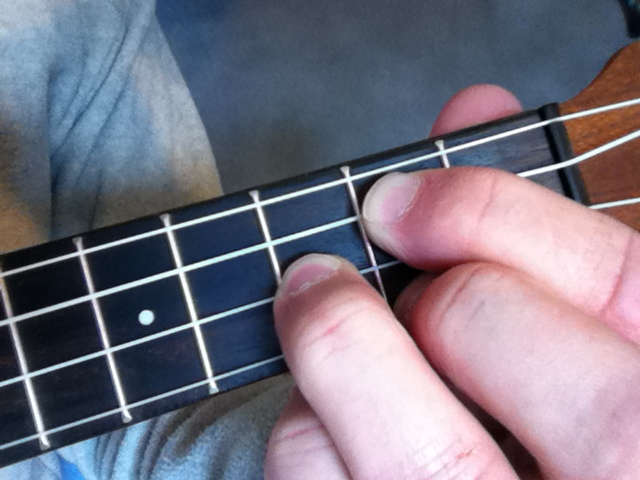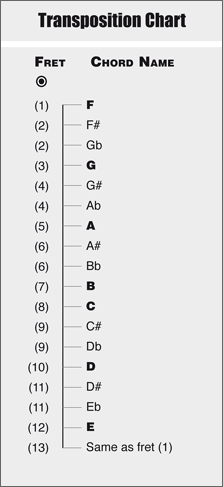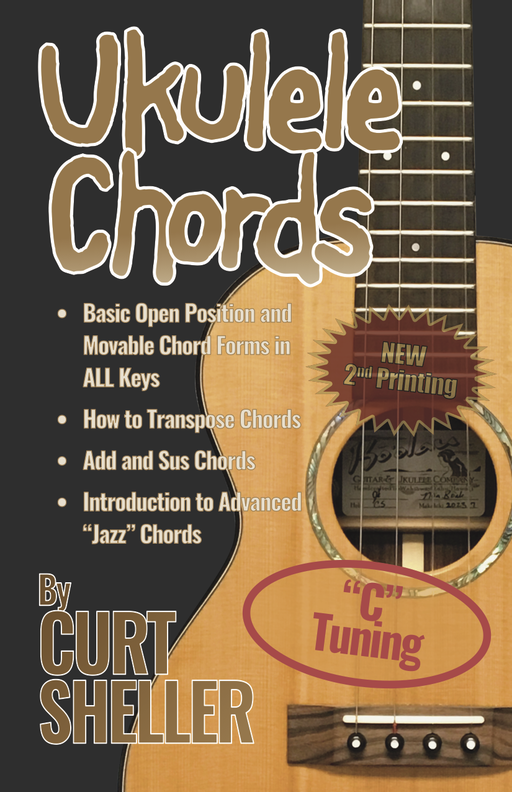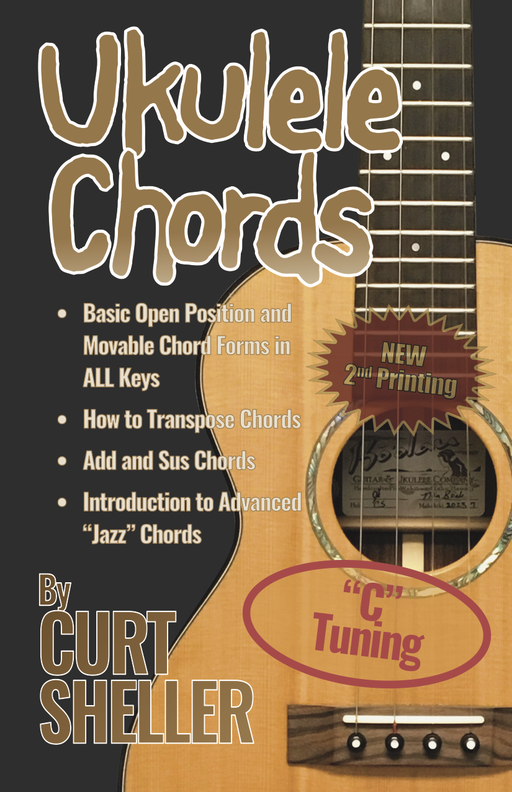Open position G chord and its movable form and variations.
Open position G and its movable form and variations.
Available for Premium Site Access Plans Only



Open Position Fingering

Movable Form Fingering
Checkout the Learn a Chord a Day lessons for Open Position G for all the information you can get from a chord.


 Use the Root or perceived root of the chord to transpose to different keys.
Use the Root or perceived root of the chord to transpose to different keys. A larger sized transposition chart is available in the Ukulele Chords book. This is the book these expanded chord lessons are based on.
A larger sized transposition chart is available in the Ukulele Chords book. This is the book these expanded chord lessons are based on.Chord Tones – G B D
The chord tones of a G major chord are the 1st, 3rd and 5th scale degrees of the G Major Scale ( G A B C D E F# G' ).


- 1 – the Root or letter name of G is G
- 3 – the third of G is B
- 5 – the fifth of G is D


Movable Form Chord - Alternate Voicing
This alternate voicing is the open position F chord from lesson 3 and might be a bit easier to finger when first learning the ukulele.
_v2.png)
chordthat, at its foundation is not a chord but a DYAD.

.png)
Related Lessons, Videos, Lesson Series, Songs, Books & Reference Charts, Resources & Assets, Workshops are below.

Finally, learn the names of the notes of the ukulele fingerboard in C tuning .

Learn the six fingering principles to navigating the ukulele fingerboard. Fingering is one of the most universal topics. Book: Six Secrets of the Ukulele Fingering

Harmonic Analysis is the understanding of the functional sequence of chords. It is the process used to analyze the harmonic structure of a progression, song or composition. Book: Harmonic Analysis for Scale Selection and Chord Substitution

Learn to read single note melodies in the first/open position is a lot easier than you might think. Book: Ukulele – Reading Music Series – Primer

An organized collection of daily practice and reference material for the contemporary ukulele player for developing the vocabulary and knowledge necessary for single note playing. Book: Daily Practice Material for the Contemporary Ukulele
Checkout the Books & Reference Charts for additional Handy, Dandy Reference Charts.

Ukulele Fingerboard Chart for C Tuning, Low or High G – G C E A

Ukulele Fingerboard Chart for G Tuning, Low or High A – D G B E

A handy reference chart of all 15 major and relative minor key signatures. US Letter 8.5 x 11 sized (ANSI-A), A4
Checkout the Books & Reference Charts for additional Handy, Dandy Reference Charts.








.jpg)